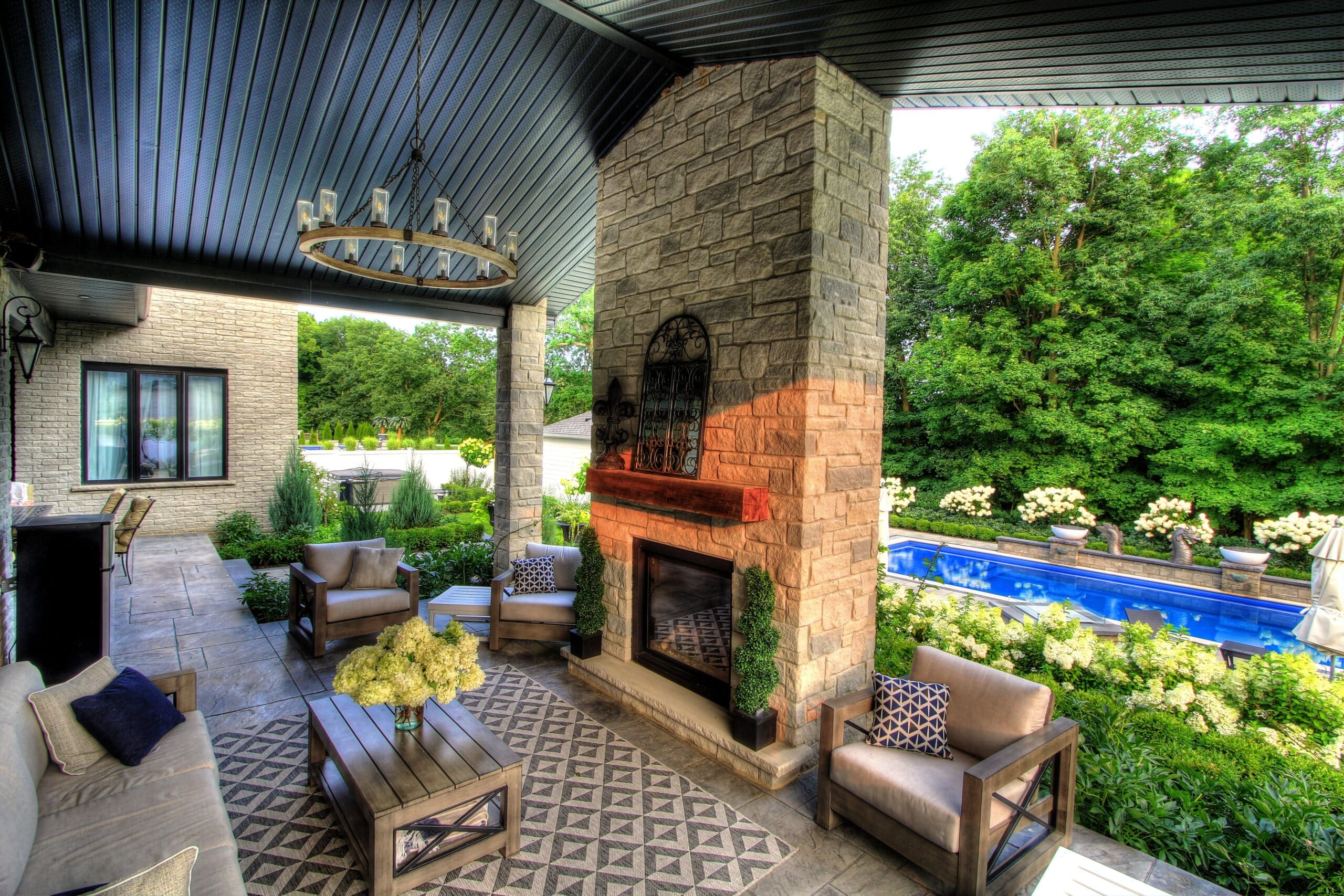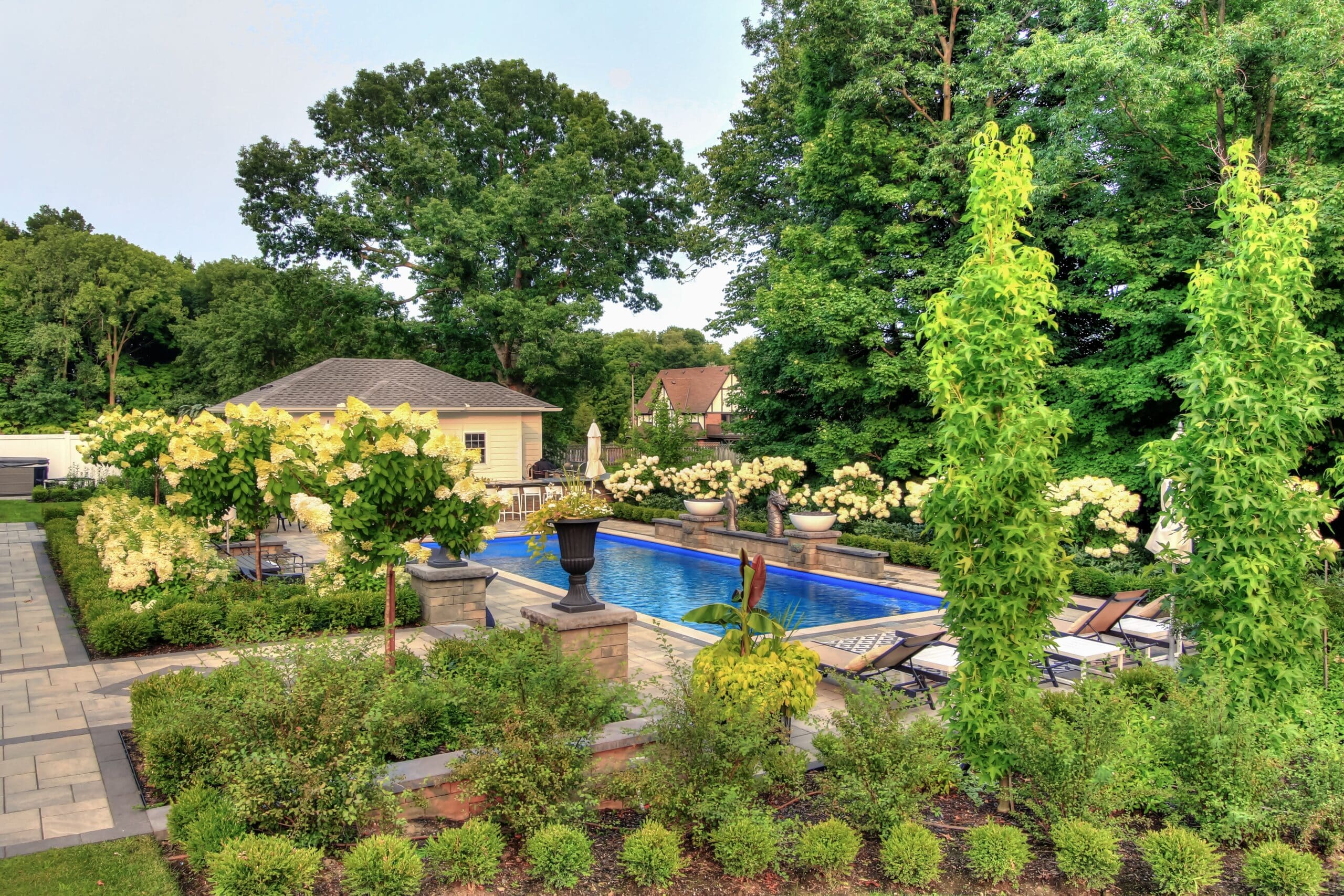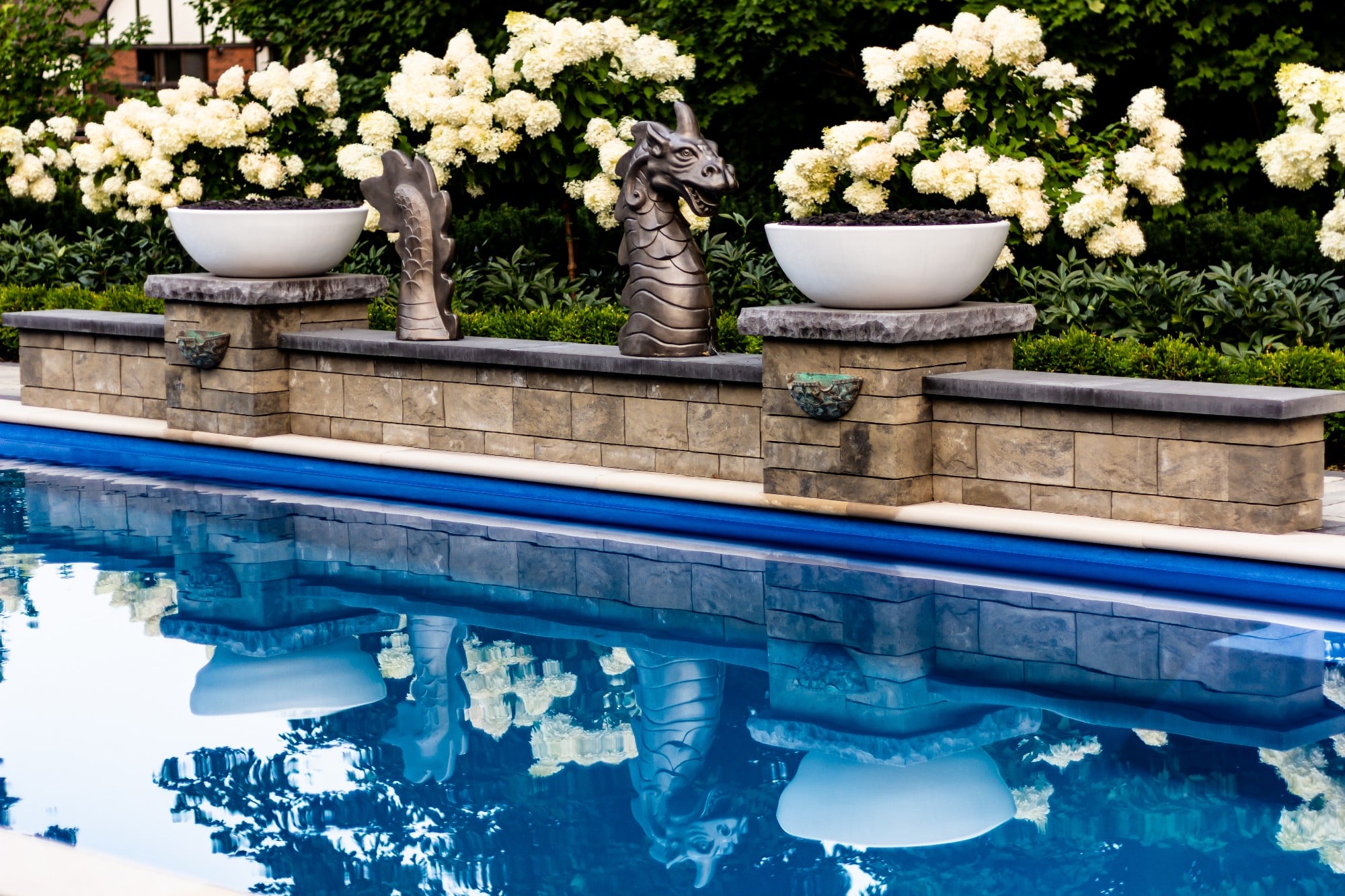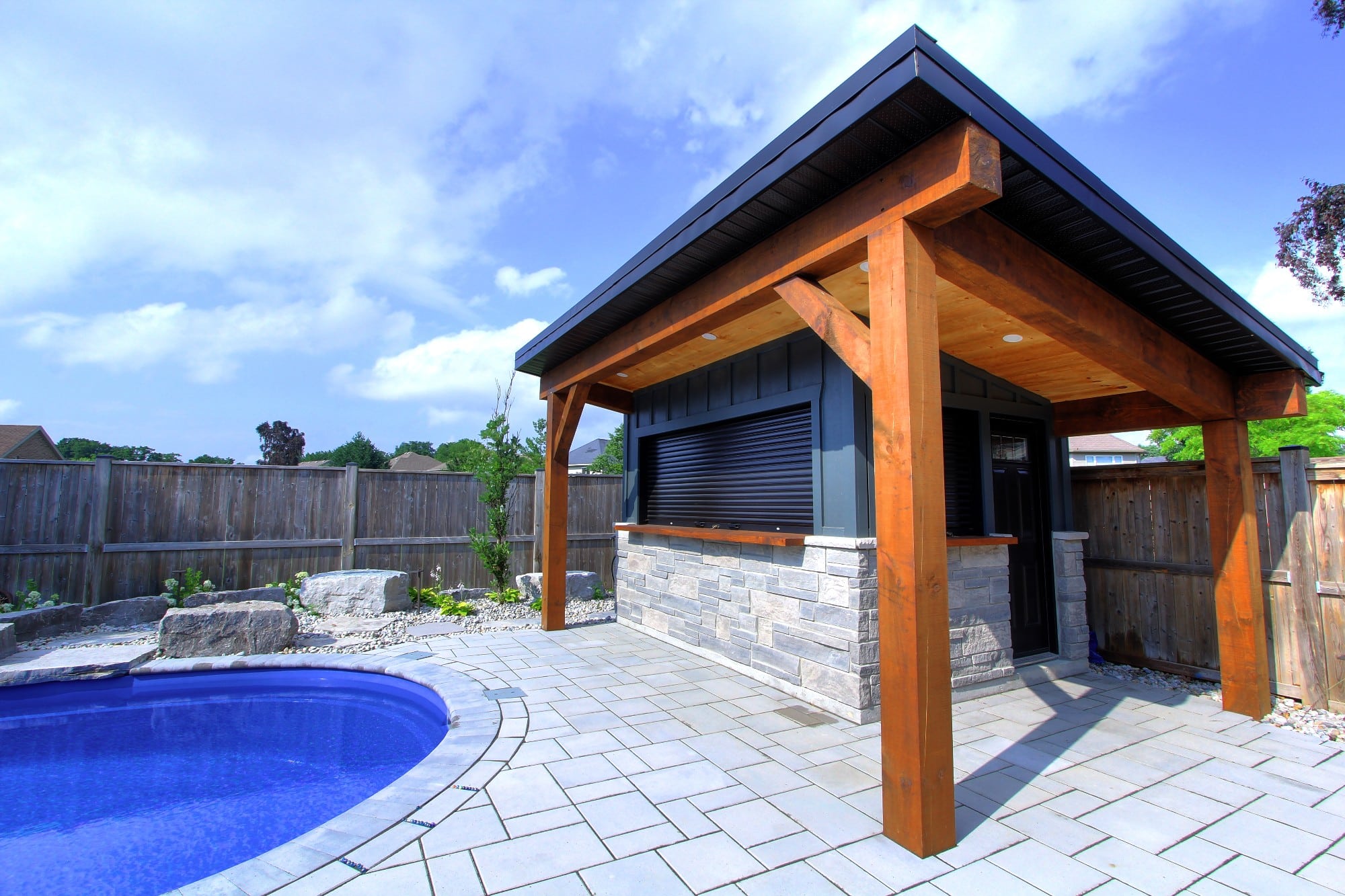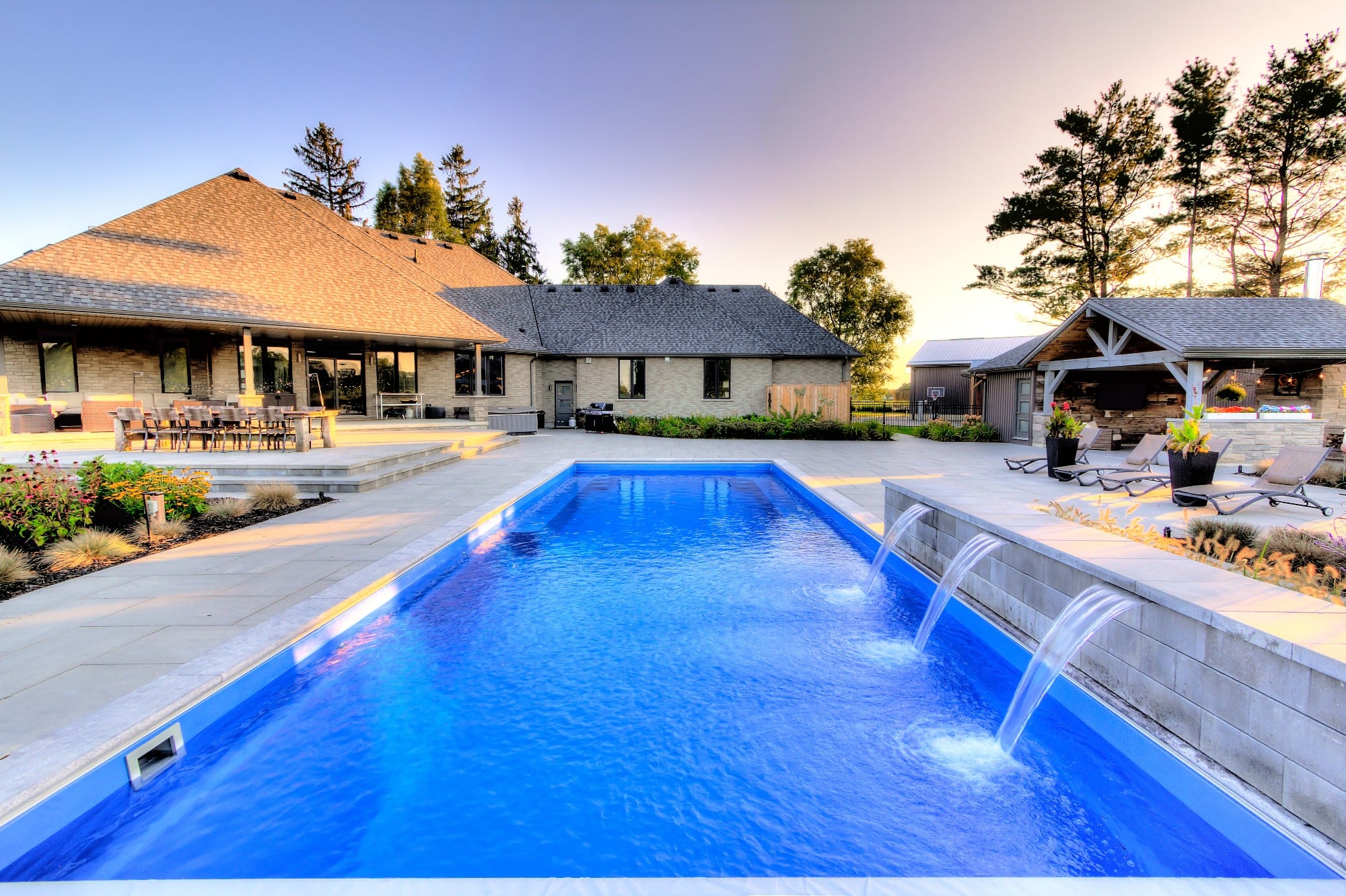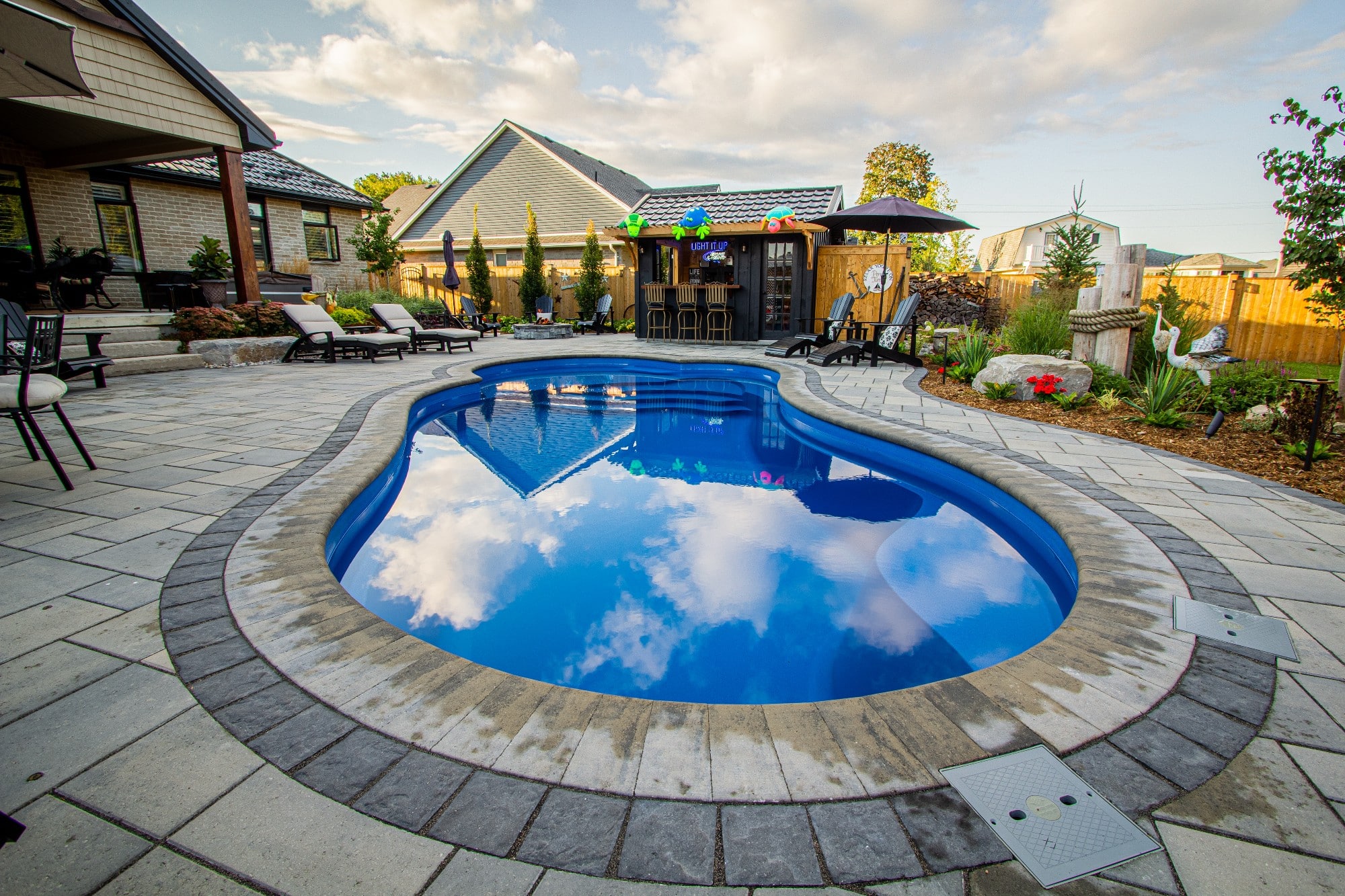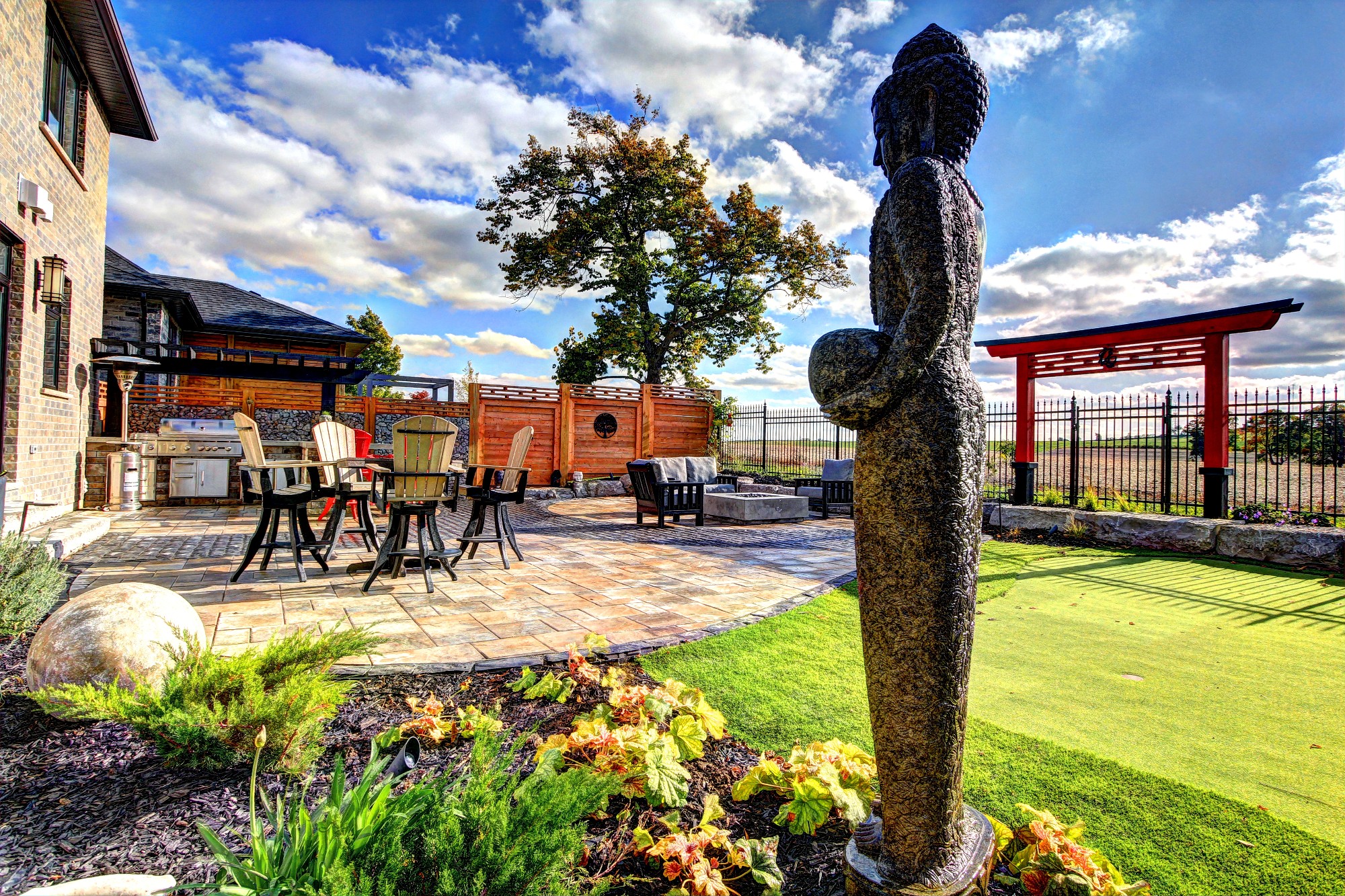Embracing Sustainability in Outdoor Pool & Landscape Design
In today’s eco-conscious world, integrating smart technology and eco-friendly practices into your poolside landscaping is not just about enhancing aesthetic appeal—it’s about creating a sustainable outdoor environment that is efficient, cost-effective, and environmentally responsible.
This comprehensive guide explores a variety of innovative landscaping solutions that harmonize advanced technology with natural design elements, aiming to conserve resources while providing a functional and beautiful living space.
Smart Landscaping Technologies
- Automated Irrigation Systems: Advanced irrigation systems equipped with sensors can significantly reduce water usage by adjusting the watering schedule based on real-time weather conditions and soil moisture levels. These smart systems help in conserving water, one of our most precious resources, and also reduce your utility bills over time.
- Energy-Efficient Lighting: Opting for LED and solar-powered lighting for your poolside not only lowers energy consumption but also cuts down on electricity costs. These lights can be integrated with motion sensors and timers to further enhance their efficiency and reduce wastage.
- Robotic Lawn Mowers and Pool Cleaners: Automated maintenance tools like robotic lawn mowers and pool cleaners streamline the upkeep of your outdoor areas. They operate independently, saving you time and effort, and minimize the need for chemical treatments by maintaining clean and tidy surroundings.
- Solar-powered Lighting: Utilizing solar-powered lighting around your pool not only saves energy but also creates a mesmerizing ambiance in the evenings. These lights harness the power of the sun during the day, storing it in rechargeable batteries, and then illuminating your pool area with a warm glow at night without any additional electricity needed.
- Smart Pool Covers: Opting for a smart pool cover can help reduce water evaporation and heat loss, thus conserving water and energy. These covers are designed with built-in sensors and automation features that allow you to easily open and close them with a touch of a button or even through a smartphone app.
- Smart Controllers: Integrating a smart controller system with your poolside landscape design can provide you with complete control over various aspects of your outdoor space. From adjusting the temperature of your pool to managing the lighting and sound system, these smart controllers offer convenience and help optimize energy usage.
Eco-Friendly Plant Choices
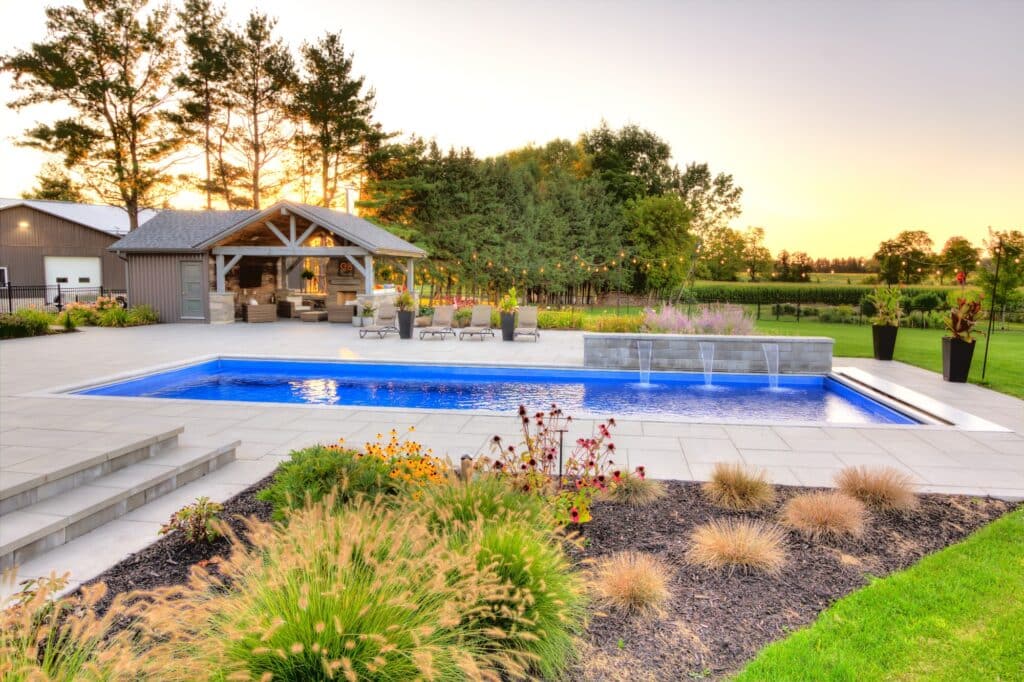
- Native Planting: Selecting native plants for your landscape is crucial for low-maintenance gardening that doesn’t strain local ecosystems. These plants require fewer resources such as water and fertilizers and are more resistant to local pests, thus decreasing the need for chemical interventions.
- Pollinator-Friendly Gardens: Designing gardens that attract beneficial insects not only supports local biodiversity but also helps in pollinating your other garden plants. Include flowers like lavender, marigolds, and zinnias, which are known for attracting pollinators while deterring pests like mosquitoes and aphids.
- Repelling Unwanted Guests: Incorporate plants like citronella, lemongrass, and catnip, which are natural repellents for mosquitoes. Additionally, maintaining clean and dry garden spaces can discourage pests such as rats and snakes from settling near your pool area.
- Edible Landscaping: Growing your own herbs, vegetables, and fruit trees not only provides fresh produce but also reduces the carbon footprint associated with transporting food items. Edible landscapes can be both beautiful and functional, providing greenery and food, while also saving on grocery bills.
One Step Further: How About Incorporating a Greenhouse?
In the variable Canadian climate, where growing seasons can be short and temperatures fluctuate widely, incorporating a greenhouse into your backyard landscape offers an interesting solution.
A greenhouse not only extends the growing season but also creates opportunities to cultivate a wider array of plants that thrive in controlled environments. This addition can seamlessly integrate with your eco-friendly backyard, enhancing both the beauty and functionality of your outdoor space.
Benefits of a Backyard Greenhouse
- Extended Growing Season: A greenhouse allows you to start plants earlier in the spring and grow them later into the fall, protecting them from early or late frosts. This can be especially beneficial in cooler Canadian regions, where the growing season is naturally shorter.
- Cultivation of Exotic Plants: With the controlled environment of a greenhouse, you can grow exotic or tropical plants that would not typically survive in the Canadian outdoors. This includes everything from certain varieties of orchids and citrus fruits to specialty herbs and vegetables that require consistent temperature and humidity levels.
- Year-Round Gardening: Beyond extending the growing season, a greenhouse offers the joy of gardening year-round, regardless of the weather outside. This can be a particularly soothing hobby during the long, cold Canadian winters.
Design Considerations for Integrating a Sustainable Greenhouse
- Location and Orientation: Position your greenhouse to maximize sunlight exposure, typically with a south-facing orientation. Consider its proximity to the pool for aesthetic integration and practical access. Ensure it doesn't shade your pool area unless desired for cooling purposes during hot summers.
- Heating and Ventilation: In colder months, your greenhouse may require heating to maintain a stable environment for plants. Options range from electric heaters to more sustainable choices like solar heaters or using heat generated from compost. Proper ventilation is also crucial to prevent overheating in the summer and to manage humidity levels effectively.
- Water Access: Ideally, your greenhouse should have easy access to water. Integrating rainwater harvesting systems can provide an eco-friendly water supply for irrigating your greenhouse plants.
- Materials: Choose materials that provide good insulation and durability. Polycarbonate panels offer excellent light transmission, insulation, and resistance to harsh weather conditions, making them ideal for Canadian climates.
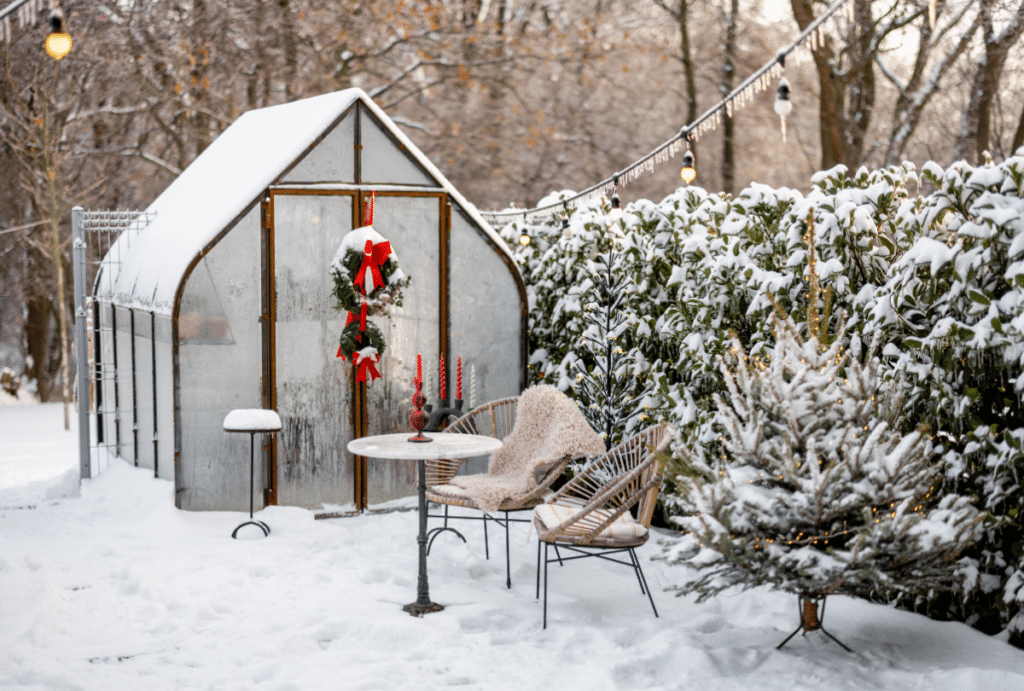
Practical Uses and Enjoyment
- Food Production: A greenhouse allows you to grow your own vegetables and herbs, reducing grocery bills and ensuring you have fresh, organic produce right in your backyard.
- Educational Space: For families, a greenhouse can serve as an educational tool for children, teaching them about botany, ecology, and the importance of sustainability.
- Relaxation and Aesthetics: The lush environment of a greenhouse can be a tranquil place to relax, surrounded by plants and greenery, which can be a soothing retreat during the grey winter months.
Adding a greenhouse to your poolside landscape in Canada is not just about gardening; it’s about creating a versatile space that enhances your quality of life all year round. It complements your eco-friendly landscaping efforts by promoting sustainability, providing food security, and offering a year-round gardening opportunity.
Water Conservation Techniques
- Rainwater Harvesting: Implementing rainwater harvesting systems can drastically reduce dependence on municipal water supplies and lower water bills. Collected rainwater can be used for irrigating the garden, replenishing the pool, or other household needs.
- Mulching: Mulch not only helps suppress weed growth but also retains moisture in the soil, reducing the need for frequent watering. Organic mulches, such as wood chips or bark, also improve soil quality as they break down over time.
- Rain Gardens: Incorporating a rain garden into your pool landscape design can help capture and filter rainwater runoff. These gardens consist of plants that are specifically chosen for their ability to absorb excess water, reducing the impact on storm drains and preventing water pollution.
- Permeable Paving: Using permeable materials for constructing walkways, patios, and driveways around your pool helps manage rainwater runoff, reduces erosion, and replenishes groundwater. These pavers allow rainwater to percolate through the gaps, and preventing standing water, which can become a breeding ground for mosquitoes. This sustainable building practice prevents water wastage and mitigates the effects of heavy rainfall.

Creating Sustainable Outdoor Spaces
- Green Roofs and Walls: Installing green roofs or creating living walls helps in insulating buildings, lowering indoor temperature during summer and retaining heat during winter. These structures also improve air quality and reduce the urban heat island effect.
- Heat-Reflecting Surfaces: Selecting decking and patio materials that reflect rather than absorb heat can significantly enhance the comfort of your outdoor living areas. Materials like light-colored natural stone or specially treated wood can keep the ground cooler, making the poolside more enjoyable during hot days.
- Composting: Implementing a composting system in your outdoor space not only reduces waste but also provides nutrient-rich soil amendment for your plants. Composting kitchen scraps and yard waste helps to promote a healthy soil ecosystem, reduces the need for chemical fertilizers, and supports the growth of vibrant and sustainable vegetation.
Conclusion: A Future-Focused Outdoor Environment
By integrating smart technologies and eco-friendly practices into your poolside landscaping, you create not only a beautiful and functional outdoor area but also one that is sustainable and environmentally conscious. These practices help reduce your carbon footprint while providing a resilient and inviting space for relaxation and entertainment.
Are you ready to transform your poolside into a smart and sustainable paradise?
Contact Countryside Landscape & Pools today to learn more about our eco-friendly and technologically advanced landscaping solutions. Let us help you design a space that you can enjoy with peace of mind, knowing it's as good for the earth as it is for your family and friends.


